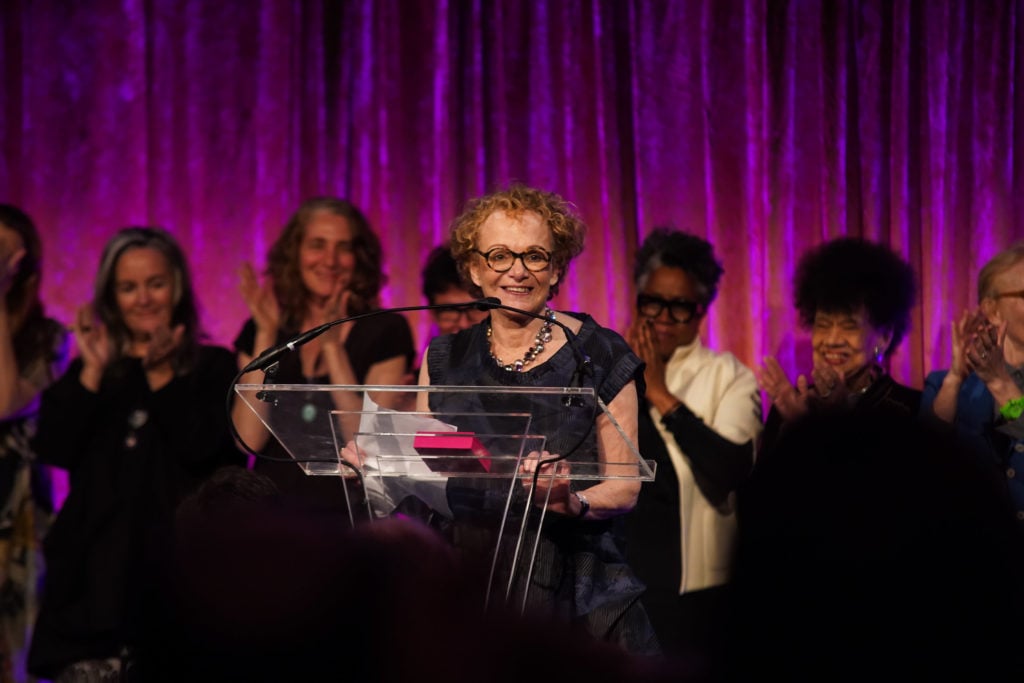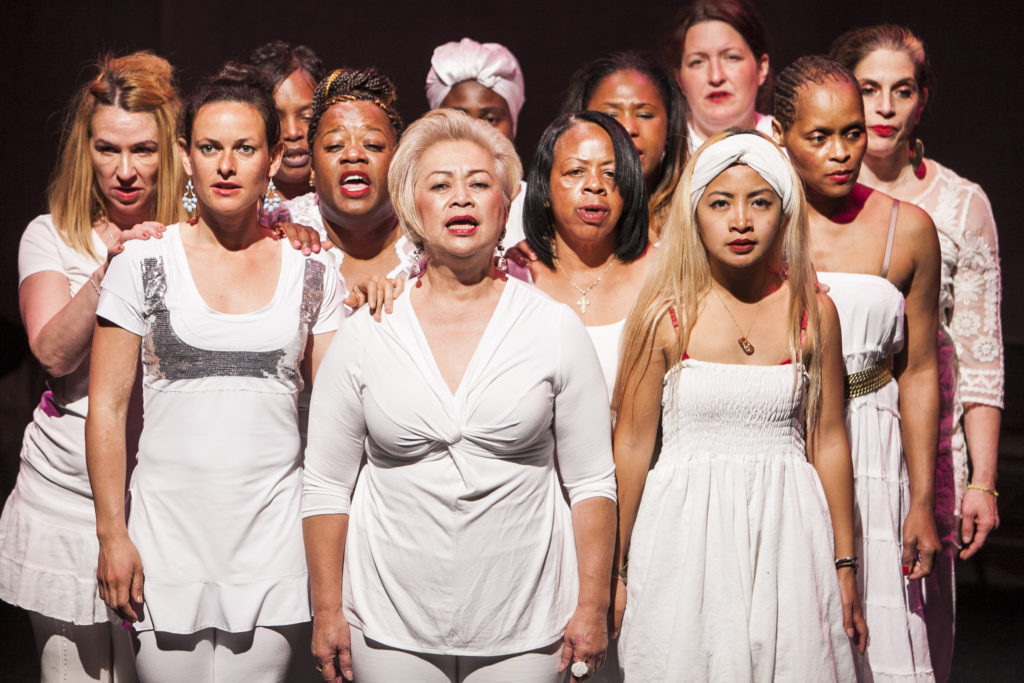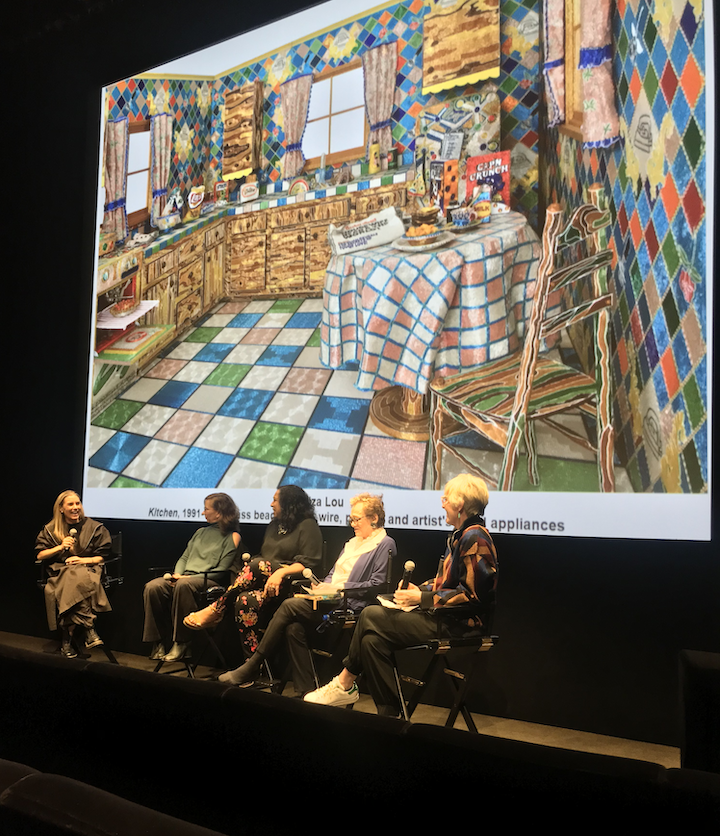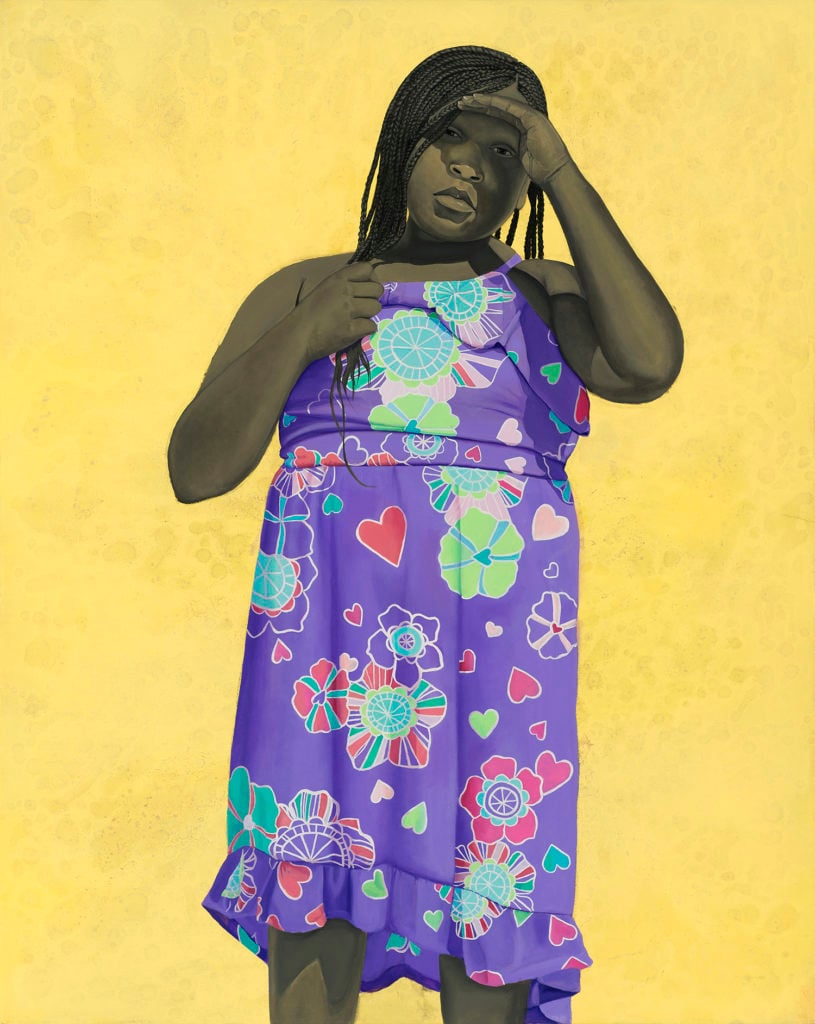Opinion
As Trump Guts the NEA, We Need More People to Engage in Activist Philanthropy. Here’s What That Means
With the NEA under threat, the founder of Anonymous Was a Woman issues a call for philanthropists to fund artists directly.

With the NEA under threat, the founder of Anonymous Was a Woman issues a call for philanthropists to fund artists directly.

Susan Unterberg

Lost in the flood of dispiriting headlines this month—which included political interference by the Justice Department, the coronavirus outbreak, and Democratic infighting—was the news that President Trump’s proposed federal budget for 2021 would eliminate the National Endowment for the Arts. While it is unlikely that the budget will be confirmed in its entirety (this is not the first year that Trump has proposed cutting the NEA), it nonetheless gave me déjà vu to 25 years ago, when conservative forces in Congress slashed the NEA’s budget by 40 percent and eliminated grants to individual artists as part of the mid-’90s “culture wars.”
These cuts curtailed a long history of federal investment in the arts that stretched back to the WPA murals in the 1930s, helped to form the American Film Institute, funded hundreds of museums, dance companies, and theaters, and supported thousands of individual artists’ work.
In 1996, in reaction to the NEA cuts, I quietly started Anonymous Was A Woman, an organization that awards no-strings-attached grants of $25,000 each year to 10 women artists over the age of 40. I had recently inherited a foundation and, as a working artist in the middle of my own career, I was intimately familiar with the challenges that women artists face.

Anonymous Was A Woman grantee Rhodessa Jones’s The Medea Project in BIRTHRIGHT? a performance in collaboration with Planned Parenthood of Northern California. Photograph by David Wilson, courtesy the artist.
The mid-career period can be a desert for women artists: they are no longer hot, young commodities ripe for discovery, nor are they sufficiently old to be “rediscovered.” And, of course, galleries already have significantly fewer women artists on their rosters to begin with. Women over 40 often must balance the demands of family life—child care, parental care, and, in some cases, single motherhood—with their work. Plus, studies have revealed that women are underpaid relative to men both in the art world and in other professions, which is notable since many women artists must hold multiple jobs to make ends meet. It all adds up to a precariousness felt uniquely by mid-career women artists, a precariousness amplified by a lack of resources that can make pursuing new projects, exploring fresh directions in one’s practice, or even persevering as an artist at all feel unsustainable.
To date, we have awarded more than $6 million to 240 artists. The impact has been significant, with artists who received the award going on to exhibit at major museums and biennials, pursue ambitious new projects, or simply take a well-deserved break. But a recent data study released by Artnet News and In Other Words sharply challenged the illusion of progress for women in the arts: between 2008 and 2018, only 11 percent of art acquired by the country’s top museums for their permanent collections was by women; only 14 percent of museum exhibitions featured women artists; and the sale of women’s artwork in the global auction market comprised only 2 percent of the total market share. Needless to say, we have a long way to go.
In 2018, I made the choice to reveal my identity as the founder and sole patron of Anonymous Was A Woman. In a political climate where women were coming out to tell their stories in greater numbers than ever before, I felt that it was important to join the conversation as a vocal supporter of women artists, to proudly express my solidarity, and to draw attention to the ongoing need for support of this demographic. Anonymous no longer, I also hoped to use my platform to expand the reach of our grant and to offer a model to other philanthropists. During the recent Frieze art fair in Los Angeles, I was joined by artists Andrea Fraser, Liza Lou, and Shinique Smith (all past award winners) for a conversation at Creative Artists Agency about the reality of making art as a woman, moderated by the curator Helen Molesworth. We shared our experiences—some discouraging, others hopeful—with an at-capacity audience.

Liza Lou, Andrea Fraser, Shinique Smith, Susan Unterberg, and Helen Molesworth in conversation at Creative Artists Agency (CAA), Los Angeles. Photo courtesy CAA.
Fraser characterized Anonymous Was A Woman’s mission as feminist philanthropy. She is right: it is philanthropy that begins from a place of advocacy and activism. This type of philanthropy—directed to a very specific need; awarded with no strings attached; and immune to the bureaucracy and entrenched structures of already-powerful institutions—ensures that grants have the maximum possible impact. Funds are awarded irrespective of some of the factors that influence decision-making within an institution (including placating donors, considering revenue or attendance implications, or prioritizing projects that may bring with them the support of well-resourced galleries).
Most importantly, it allows for complete freedom regarding how the funds are used (all that Anonymous Was A Woman requires from recipients is a letter, one year later, explaining what the grant meant to the artist and how she used it). This kind of philanthropy also brings with it the non-judgmental understanding that paying for childcare may be as valuable as investing in new materials or traveling for a project. Such advocacy is crucial at a moment when there is a total vacuum of government support for the arts. While I am uncomfortable with the label of “philanthropist,” the truth is that it is what I am. And so I urge other philanthropists to take seriously the crisis of the current moment and consider activist philanthropy in arts and culture by directly funding the work of artists and creators.

Anonymous Was A Woman grantee Amy Sherald’s All Things Bright and Beautiful (2016). Courtesy of the artist and Hauser & Wirth, ©Amy Sherald.
The idea is to create a philanthropist class that, in the absence of an NEA, does the work that the NEA was intended to do. (That is, “to fund, promote, and strengthen the creative capacity of our communities by providing all Americans with diverse opportunities for arts participation,” according to its mission statement.) Art enriches our lives and makes the world a more bearable place. It’s important that the work of today’s artists not go unfunded simply due to the whims of a single administration.
By funding artists directly, the support that we provide is unadulterated. In meeting some of the hundreds of artists who received our grant over the past two decades, I have heard how much the award meant to them—and, in many cases, that the money was appreciated, but what they really valued was the encouragement and the support to keep making, to keep pushing, to continue to work in spite of all of life’s pressures. Furthermore, it is vital that the funding reflect a wider and more inclusive “art world.” The NEA is unique in the world of cultural funding in that it reaches all 50 states, while we know that much of the funding for major arts institutions is clustered on the coasts and in major cities; so by funding individuals all over the country, philanthropists have the opportunity to reflect the NEA’s mission, even if the NEA isn’t.
Just as certain wealthy individuals are building organizations and contributing resources to address issues such as climate change, gun control, and women’s reproductive rights—issues that a different government might address sufficiently on its own—so, too, can individuals more directly intervene to support the creation of culture. Rather than solely funding museums and other established institutions that, in some cases, perpetuate inequality and make the bleak statistics above all but inevitable, activist philanthropists can fund the work of the artists themselves. This is not just a way of supporting the arts in general, but of creating more sustainable and less hierarchical networks of support.
Until we have a government that values the role of art and artists in society—and is willing to fund their work—individuals with means must embrace their own version of activist cultural philanthropy.
Susan Unterberg is an artist and the founder of Anonymous Was A Woman, a non-profit organization that has awarded $6 million in grants to 240 women artists over the age of 40.